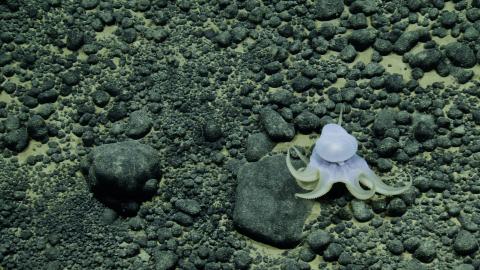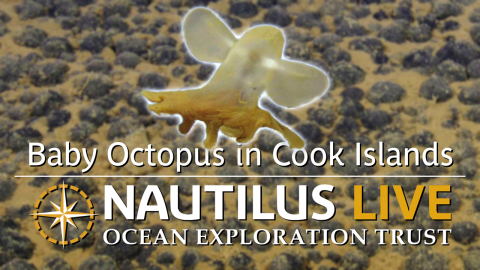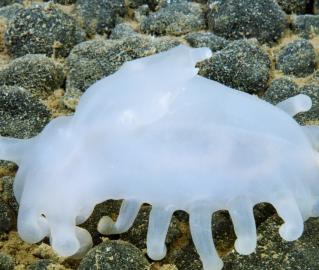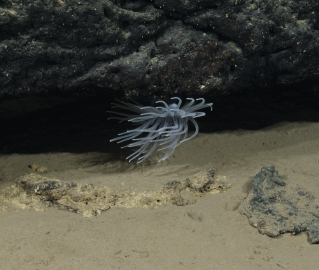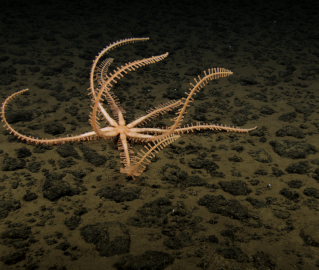Sea Cucumber Ecology in the Cook Islands Deep Sea
While they may not be first to mind on favorite deep-sea creatures, sea cucumbers are essential to the cycling of nutrients of the seafloor, gathering, processing, and (ahem) depositing out ocean food! These squishy superheroes are major players in storing carbon and an ocean system that stabilizes the whole planet's climate.
This video features some of the many sea cucumbers and cucumber traces spotted by our team aboard E/V Nautilus exploring the Cook Islands’ abyssal plains to better understand the biology and geology of the region. One of them, known as the headless chicken monster (Enypniastes eximia), has adapted a fin to swim to new grazing locations on the seafloor. How does a sea cucumber eat, and what does its poop mean for the rest of the ocean thousands of meters deep? Learn all about the importance of sea cucumber digestion to nutrient cycling in this highlight video.
The NA176 Deep Sea Habitats of the Cook Islands expedition is using the ROV, mapping, and telepresence systems of E/V Nautilus to explore deep-sea areas prioritized by the Cook Islands government and local stakeholders. All collected data will be made publicly available to stimulate further exploration and research, and to support ongoing local management and future decision-making for the Cook Islands by Cook Islanders.
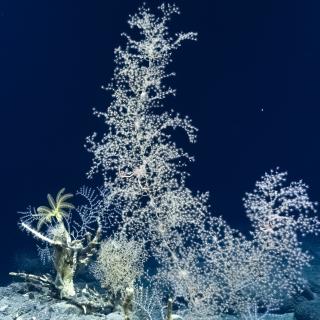
Deep-Sea Habitats of the Cook Islands
This 21-day expedition will utilize the ROV, mapping, and telepresence systems of E/V Nautilus to explore previously unsurveyed deep-sea priority areas identified by the management and science community in the Cook Islands.
